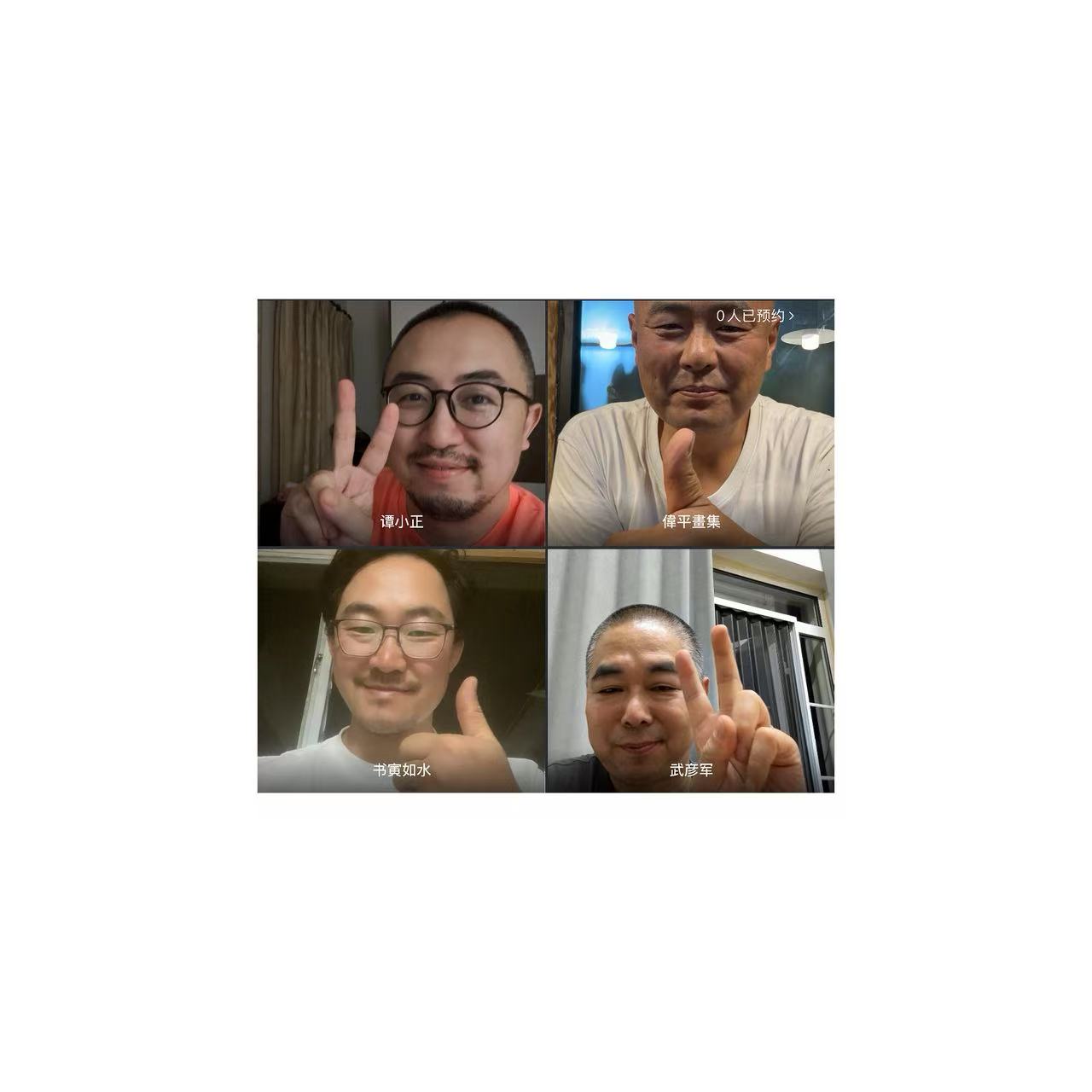“Three Acts, Four Voices” — A Conversation on AI, Art’s Responsibility, and Existence
On the evening of September 10th, four artists—Liu Weiping, Wu Yanjun, Ma Shuyin, and Tan Xiaozheng—came together online for a live-streamed discussion about art and AI. Though they come from very different backgrounds, their exchange sparked real intellectual friction, reflecting the diverse ways today’s art world is thinking about time, the self, and the future.
⸻
The Value and Responsibility of Art
Liu Weiping, drawing from more than three decades of practice, opened with a question that cut right to the heart:
“What’s the real point of an artist’s existence?”
For him, art loses its essence the moment it becomes just a tool to please the crowd. Artists, he argued, need to hold on to the “light”—only then can art inspire and heal. Without that, works risk becoming little more than “spiritual opium,” or worse, a tool of capital.
Wu Yanjun responded by framing art as a lifelong process of self-cultivation. Now in his fifties, he’s increasingly focused on the relationship between humans and the cosmos. For him, art isn’t about style or form; it’s an outward expression of one’s inner life and faith, a continuous cycle of breakthroughs and awakenings.
⸻
From Personal Practice to Inner Exploration
Ma Shuyin spoke about his own evolution from plein-air landscapes to more inward-looking work. He emphasized that art doesn’t need to carry some “lofty superiority” but should instead honor the uniqueness of every life.
Much of his recent work has grown out of meditation. His paintings are no longer copies of nature, but manifestations of inner energy. “Each of us is already complete,” he said. “Art is just a way of revealing that inner nature.”
⸻
Animation and the Possibilities of AI
Tan Xiaozheng, drawing on his experience in animation and media, added another perspective:
• AI has made it possible for ‘everyone to be a director,’ massively lowering the barrier to film and animation.
• While AI might have limited impact on painting, its effect on film and animation is nothing short of revolutionary.
• In the future, we might see a model where individuals create short films and audiences pay to watch them—opening up new paths for artists to survive.
At the same time, he cautioned that there’s still a big gap between commercial animation and art animation. Capital-driven hits like Ne Zha may lean toward the formulaic, but AI could empower more individuals to pursue personal, experimental work.
⸻
A Shared Call: Returning to What’s Real
After more than two hours of conversation, the four artists found common ground despite their different angles:
• Art shouldn’t just be about technique or surface—it should heal and uplift the human spirit.
• AI is both a challenge and a tool; its value depends entirely on how artists choose to use it.
• The true worth of an artist lies not in catering to trends, but in holding onto the “light.”
⸻
Closing Thoughts
This online dialogue wasn’t just an exchange between four artists—it felt like a public thought experiment. It reminded us that in an era where AI is moving at breakneck speed, the meaning of art hasn’t disappeared; instead, it’s being asked again, more urgently.
As Liu Weiping put it:
“An artist’s role isn’t to create more darkness, but to bring light to others.”
